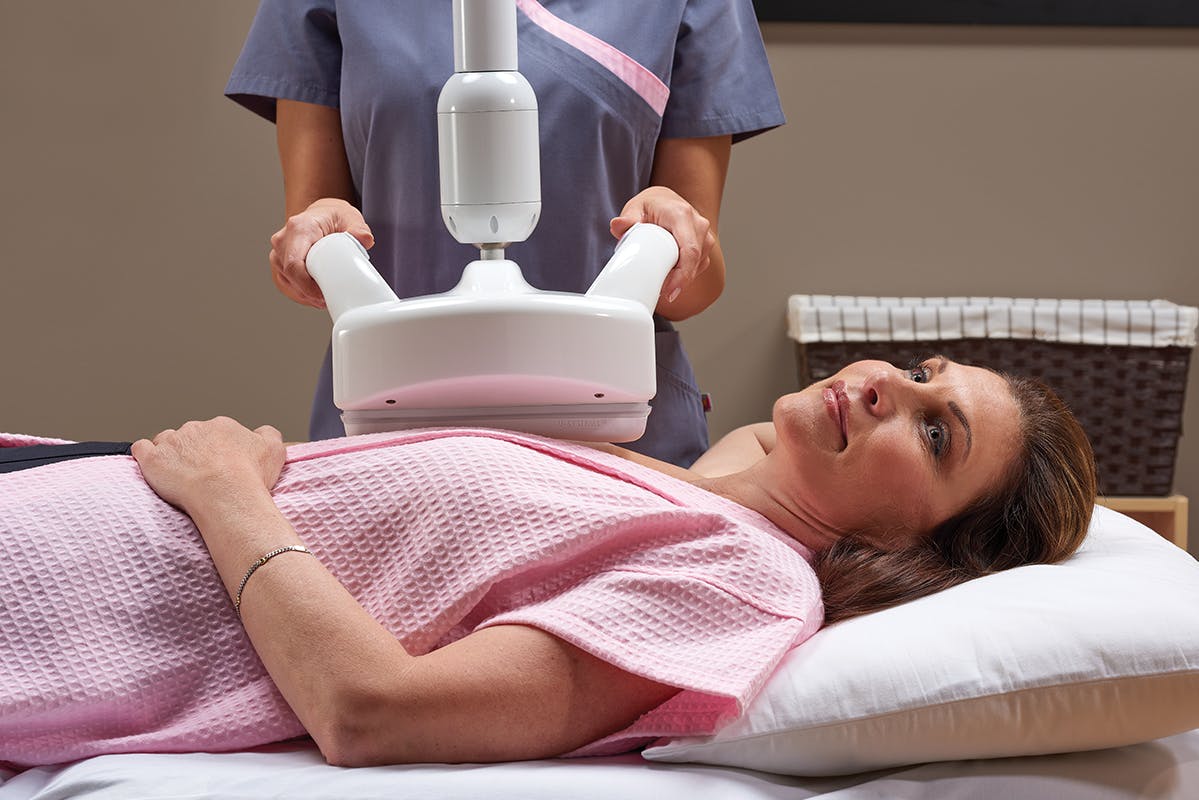For women with dense breasts, mammography may not be enough to adequately screen for breast cancer. When breast cancer is found early, it's nearly always curable. However, early-stage, small cancers can be difficult to see during a mammogram, with nearly one in two cancers missed on standard mammography in women with extremely dense breast tissue.
GE Healthcare joined providers at the 2019 American College of Obstetricians and Gynecologists (ACOG) Annual Meeting in Nashville, Tennessee on May 3 to showcase the Invenia ABUS 2.0 automated breast ultrasound system. Experts, including Dr. Serena Tidwell and Dr. Lisbet Hanson, discussed the benefits of adding 3D ultrasound to your practice, both for dense breast exams and for other gynecologic screenings. 3D breast ultrasound is a convenient, less expensive option for cancer screening in addition to mammography for your dense breast patients.
Cancer Risk With Dense Breast Tissue
"There is much confusion around breast screening — when to start, when to stop and how often to screen," says Dr. Serena Tidwell, medical director of the Pink Monarch Breast Center and Midtown OB/GYN and a winner of the GE Healthcare Retrospective ABUS Research Competition. "Genetic and lifestyle factors combine to create a woman's overall risk of breast cancer. In recent years, research has focused on the risk associated with having dense breasts."
Women with dense breasts have a higher risk of developing breast cancer, with more than 70 percent of breast cancers occurring in women with denser breast tissue. This may be because breast density can make cancer harder to detect, making it more likely to be detected at a later stage. Dense breast tissue may also be hormone-rich and more likely to encourage cancer growth.
Supplemental 3D Breast Ultrasound For Cancer Screening
Cancer in dense breasts can be hard to spot on a mammogram because both cancerous tissue and dense breast tissue appear as white areas. Additional screening with MRI is an option, especially for women at a high risk; however, this procedure requires contrast injections and can be uncomfortable for the patient. MRI also has a significantly higher price tag than both mammography and ultrasound.
Performing a 3D breast ultrasound, whether with a handheld unit or with automated breast ultrasound technology, yields significant additional cancer detection with more comfort and less expense for patients. Adding a 3D automated breast ultrasound screening to mammography can improve breast cancer detection in appropriate patients by about 35 percent. Ultrasound is especially useful for finding small, node-negative, invasive cancers that can be missed by a mammogram.

Images of the range of breast density.
"At my breast center, which is co-located with my OB/GYN practice, we offer automated breast ultrasound, and I have seen firsthand the benefit that supplemental screening can provide my patients with dense breasts," Dr. Tidwell says.
Preparing for Further Treatment
Automated breast ultrasound can also provide vital details to prepare for surgery or other treatment and monitoring. 3D imaging helps clinicians more completely visualize tumors and surrounding tissue and provides more precise location information. This leads to increased confidence in the tumor extent and location heading into treatment.
As with any cancer screening procedure, 3D breast ultrasound can lead to false-positive results, so it's important to discuss the risks and benefits of any screening with patients before moving forward.
"We need to impress upon patients the importance of screening and offer them additional screening that takes into account personal risk factors," Dr. Tidwell says. "We need to help patients understand the facts, offer them options and list the pros and cons of each. Then, it's their choice to move forward with an exam."



